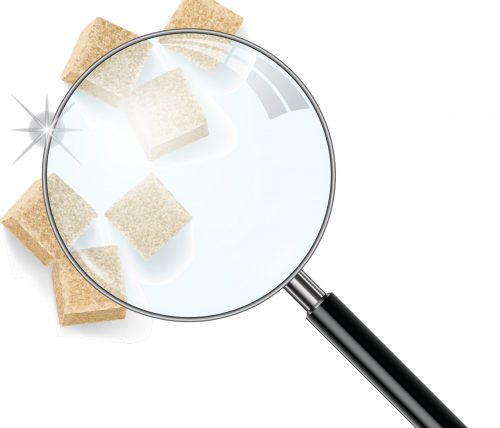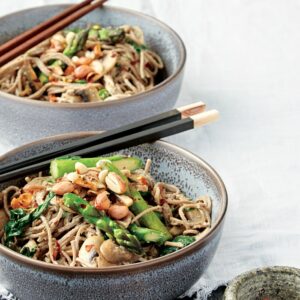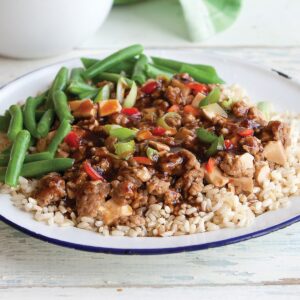
Becoming a sugar spy – sniffing out hidden additions or decoding nutrition labels – is easy when you know how.
If you’re trying to limit added sugar in your family’s diet, the supermarket can be a tricky place to navigate. As well as the obvious places we’d expect to find sugar (sweet drinks and treats such as biscuits, ice cream and lollies), there are also a lot of foods we might not expect to contain sugar, including those featuring package claims of ‘healthier’ or low-sugar options. Here’s a guide to spotting sugar in common foods.
Where
Mayonnaise and dressings
What to look for
These products can be made traditionally and simply with oil, eggs, vinegar and flavourings. But manufacturers often add sugar or sweeteners to balance flavours. It may appear as fruit juice, fruit juice concentrate, honey, caramelised sugar or brown, raw or white sugar.
How to avoid it
Considering we don’t use much dressing at one time, a little sugar here is not going to hurt. But check the ingredients list; if a form of sugar is high on the list you could be getting more than you’ve bargained for. Compare the ‘per 100g’ columns on dressings for total sugars and choose ones with lower numbers.
Peanut butter
What to look for While there’s a little naturally occurring sugar in peanut butter (and this is fine), some also have added sugar. To check, have a look at the ingredients list. It’s usually simply listed as sugar.
How to avoid it
Choose peanut butter with no added sugar (or salt). It won’t always say on the pack front, but there are lots of great options at all price points. Check the ingredients list if you’re not sure.
Tip
‘American-style’ peanut butter almost always contains added sugar.
Cereal
What to look for
As well as plain sugar, in cereal you may find brown sugar, coconut sugar, fruit juice, fruit purée, fruit juice concentrate, honey, maple syrup, molasses, rice malt syrup and dried fruit. Often, you will find more than one of these in the list, meaning some cereals can contain surprisingly high levels of sugar.
How to avoid it
Check the total sugars column on the nutrition label. If it’s higher than 15g per 100g, check the ingredients list for the above added sugars. Choose cereals with lower total sugars or consider making your own muesli from sugar-free ingredients.
Tip
Don’t assume expensive paleo or organic cereals are healthier. They can contain surprisingly high levels of added sugar in the form of coconut sugar, honey or rice malt syrup.
Non-dairy milks
What to look for
Soy, almond, oat and rice milks are different from dairy milk, in that they are manufactured products that can contain many ingredients. In order to make them more palatable, sugar is often added, even though the milks may not be overly sweet-flavoured. Sugar in soy and nut milks may be listed as cane sugar, maltodextrin, brown rice syrup or sugar cane juice.
How to avoid it
Although sugar levels in these products are low, it is almost all added sugar. It’s worthwhile looking for unsweetened versions, of which there are quite a few now available. Check the ingredients lists if you are not sure.
Tip
Some soy and nut milks don’t say they are sweetened on the front of the pack, even though they are. These may say ‘original’ or ‘classic’ as opposed to ‘no-added-sugar’ versions. Check the ingredients lists to be sure.
Sauces
What to look for
Condiments such as tomato, chilli and barbecue sauces, and others, add flavour to meals, but they can add significant extra sugar, too. Some sauces can be 50 per cent sugar. This comes in many forms, including white, raw and brown sugars, honey, maple syrup, molasses, fruit juice, fruit purée, dates and corn syrup. It’s surprising to find that even sauces that taste savoury, such as oyster sauce, can have quite high levels of sugar.
How to avoid it
It’s hard to avoid sugar in some sauces; sweet chilli, for example, is what it sounds like. But levels can vary between brands, so look at ingredients lists and compare the ‘per 100g’ columns. Some styles of sauce, eg, sriracha, chipotle and tabasco, have naturally lower levels of sugar. And, as with all sauces, use in small quantities.
Where you wont find added sugar
You may have read advice to avoid trim milk because it has more sugar than full-fat milk, the implication being that trim milk has added sugar. But there’s no added sugar in plain trim milk.
Likewise, plain reduced-fat yoghurt has no added sugar, either. The sugar in dairy is the naturally occurring sugar lactose. We might also assume wine and beer contain lots of added sugar. In fact, both drinks are naturally low in sugar; it’s the alcohol they contain that does us harm.
How much sugar is okay?
Free sugars are the ones we need to keep an eye on. These are the sugars that are added to our foods and those in syrups, juices and honey. The World Health Organization suggests we limit free sugars to no more than 5 per cent of energy (kJ). This means a daily limit of around 6 teaspoons of free sugars for adults and 3 teaspoons of free sugars for children.
Different names for sugar
- agave nectar
- beet sugar
- blackstrap molasses
- brown sugar
- caramel
- cane sugar
- coconut sugar
- confectioner’s sugar
- corn syrup
- demerara sugar
- dextrose
- fructose
- fruit juice
- fruit juice concentrate
- galactose
- glucose
- golden syrup
- high fructose corn syrup
- honey
- icing sugar
- invert sugar
- lactose
- maltodextrose
- maple syrup
- muscovado
- molasses
- palm sugar
- raw sugar
- rice syrup
- treacle
www.healthyfood.com










